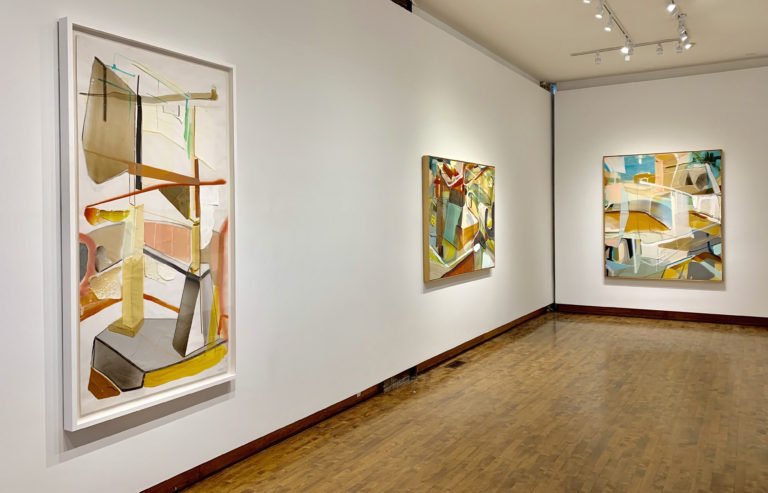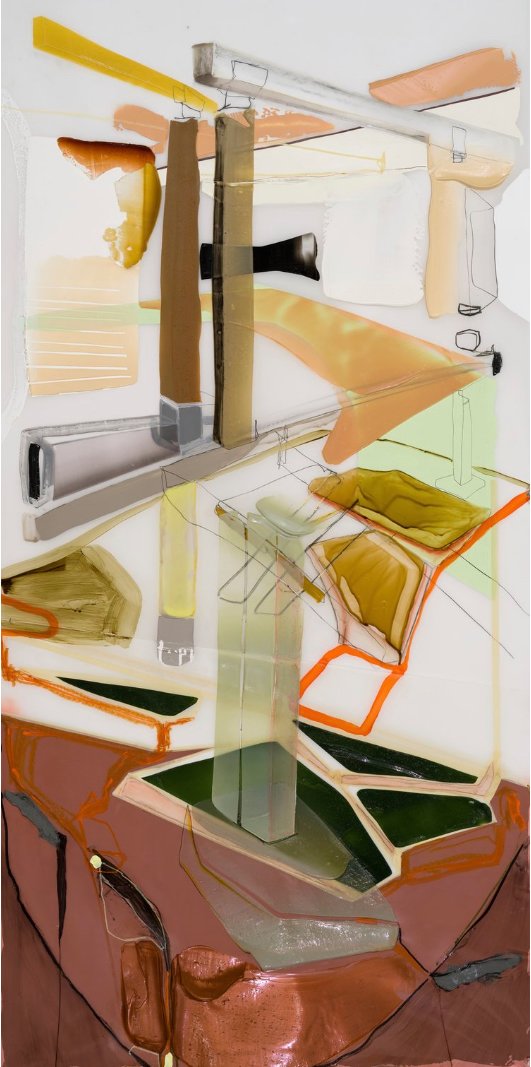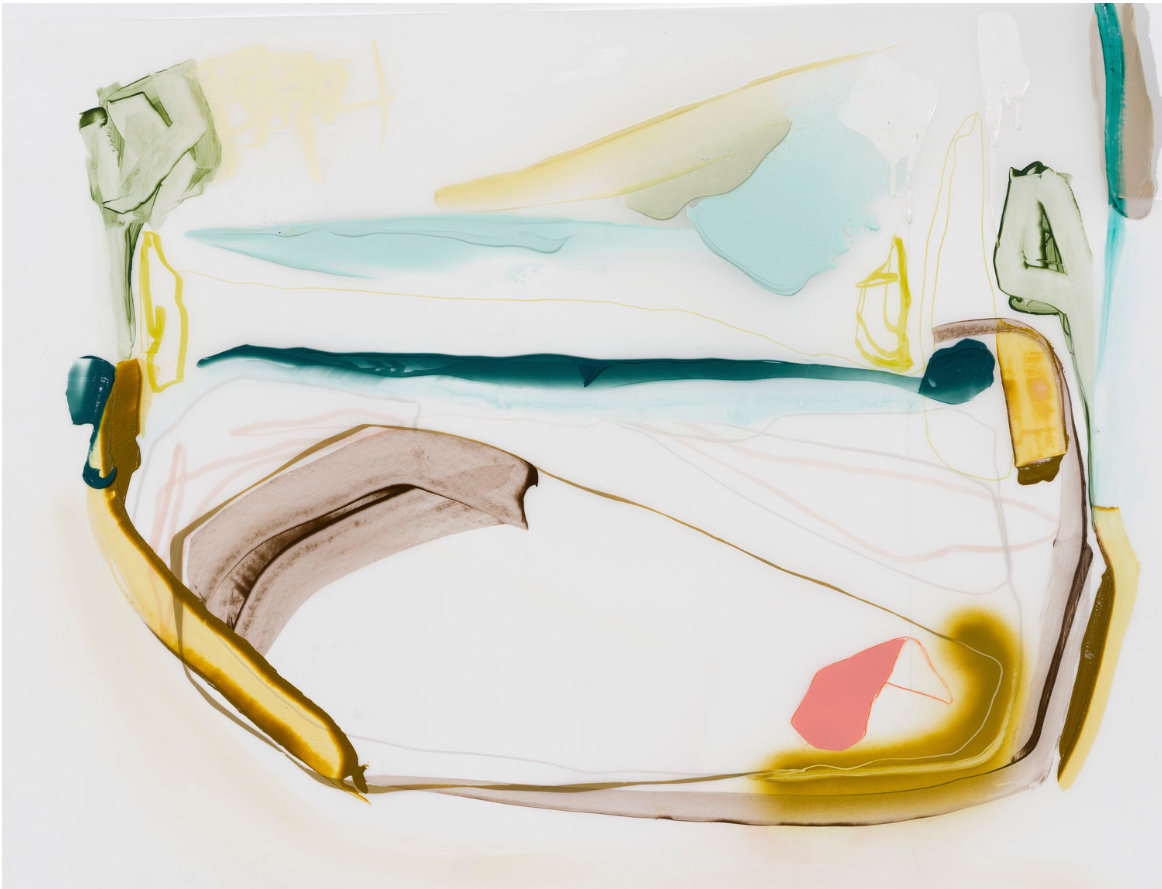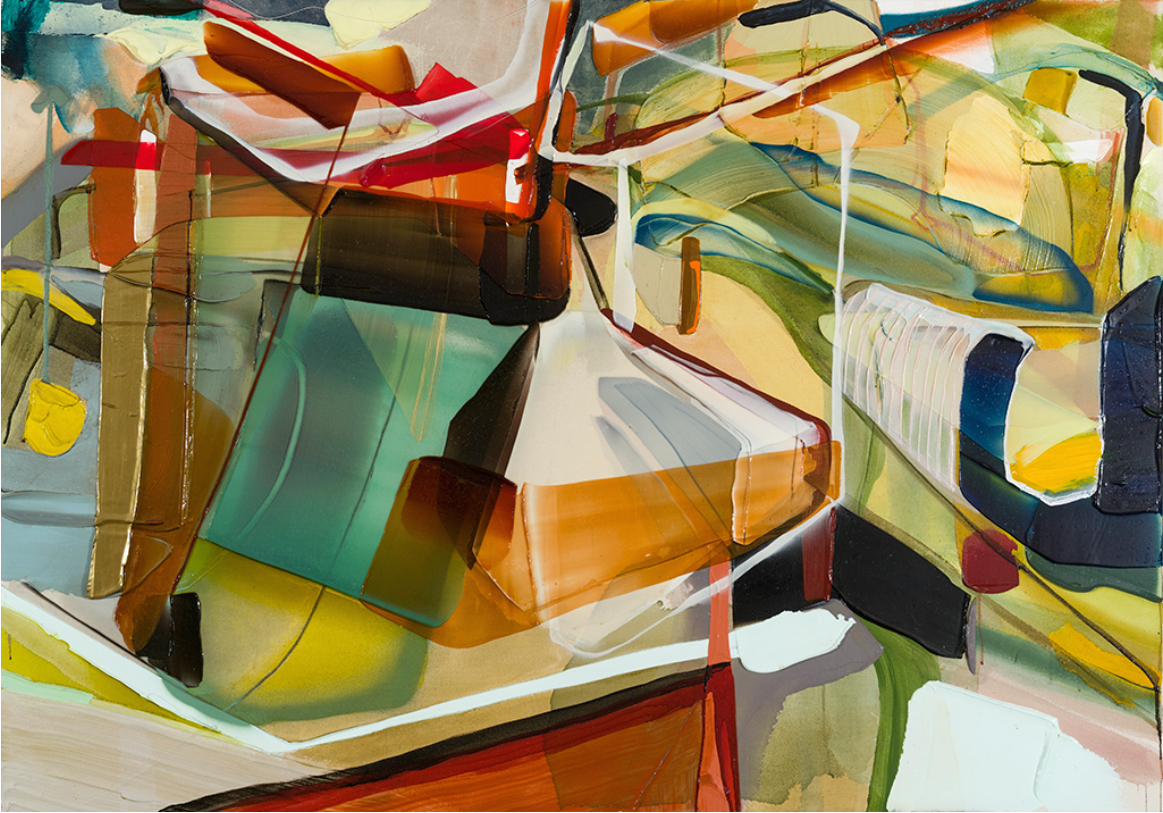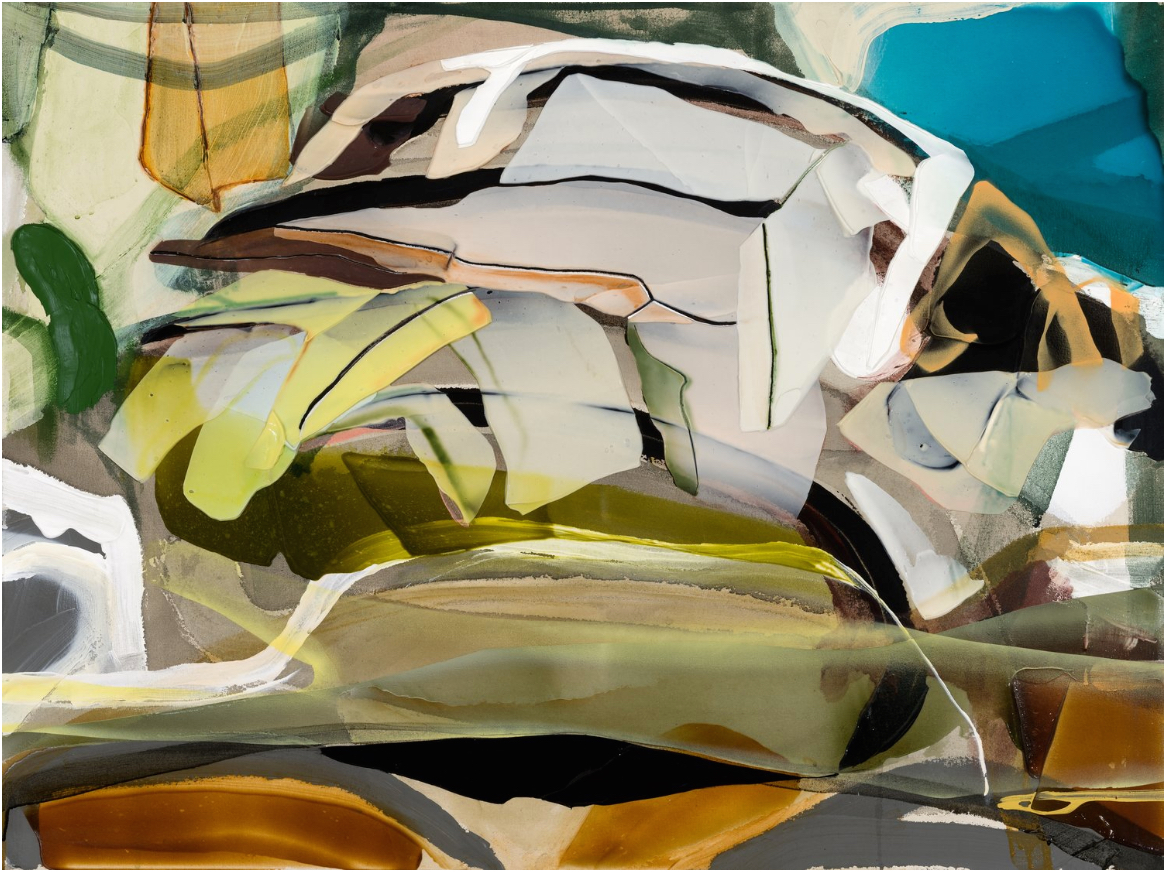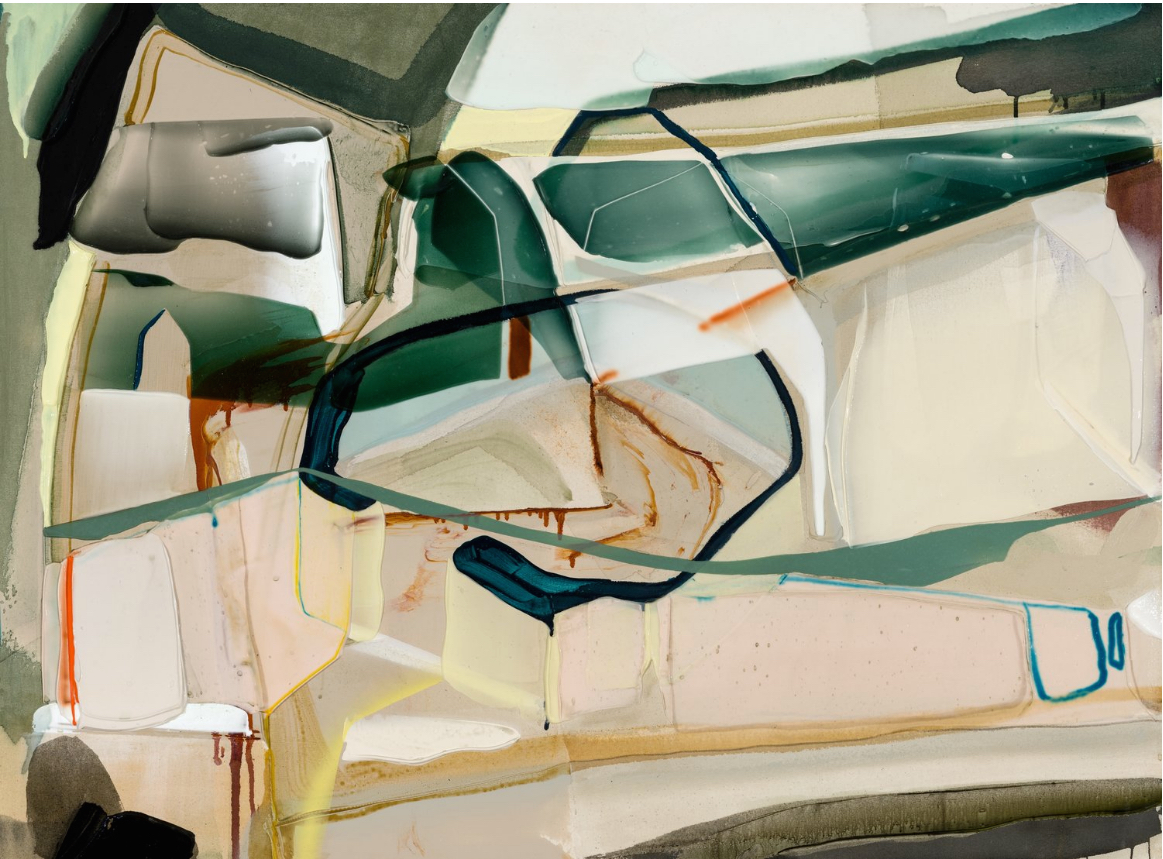This exhibition is titled In Medias Res, which translates from latin as in the middle of things. As with a novel, therefore, we are encouraged to see Charbonneau’s paintings as part of a narrative not at its inception but already in full swing. As such the viewer is dropped into the middle of the action with no introduction. This also aptly describes the viewer’s experience on first encountering these complex acrylic paintings, with hints of spray paint, on canvas and mylar. At first glance the paintings are difficult to work out. I struggled to see beyond the richly coloured variegated surfaces ranging from patches of stained bare canvas to passages of thick impasto paint. Yes, I thought, they are gorgeous to look at, but how, I asked myself, does one enter these paintings? Slowly it turns out. It takes work, but it is very much worth it.
What is immediately clear is that these paintings are depictions of spaces from a personal perspective. There are sketchily drawn architectural elements, pieces of furniture and snatches of landscapes. The sketchiness is best characterised as the economical rendering of space, in the same way as Francis Bacon often rendered space by putting down just a few thin lines of paint over a flat area of colour. Such rendering is on full display in Charbonneau’s study on mylar titled Vertical Stress I, for example. The way he renders space more generally gives his paintings a psychological dimension. They are psychological maps one might say. Places are represented from a multiplicity of angles – in a way that is faithful to his experiences of them over time.
What is the motivation for Charbonneau’s subject matter? He depicts, in his quasi-abstract style, schoolyards, baseball fields (as in his painting Camp de Base), stores and offices. He is influenced by his training and a proclivity to reflect on his own experiences of living in the city of Montreal. He trained as an architect, though from the beginning of his studies he took art classes. The program he was enrolled in was based on the Bauhaus approach, that is, a comprehensive training in the arts and design. While this helps to explain the urban themes in his work it is not the whole story.
In addition, Charbonneau cites as a major influence the ideas of the Situationist International. This diverse collecton of politically motivated artists and writers were active mainly in the 1950s and 60s and centred on Paris. The situationists maintained that modern capitalist society aims to substitute genuine human interaction with ersatz social relations that promote uninhibited consumption. Autonomous human action is thus replaced by passive consumption. The urban environment, accordingly, is shaped to facilitate this consumerism. The free spirit – the artist, writer, poet and so on – is urged to resist this encroachment on the possibility of true lived experiences by creating what the situationists called situations. These are spontaneously created events that express freedom of action and genuine social interaction. One type of event or action that the situationists practised, in the urban centre of Paris especially, was to go for extended walks without having any predetermined destination. This process they called dérive. These were acts aimed at taking back control of their city – to redraw its map rather than blindly adhering to the predictable routes laid out by the consumer way of life. The urban environment, therefore, is reimagined as an arena of free play. This is one of the key ideas, I hazard, that guides Charbonneau’s creative acts as a painter. He aims to take possession of his own environment by recreating it in paint.
By way of illustration, consider the account he offered me of how he came to produce the pair of paintings titled Silencia I and Silencia II. One day, while staying in Paris, he was watching a television news report about an earthquake in Mexico City. On the screen he saw the scene of a flattened building through which rescue workers were searching for survivors. There appeared on the site at that moment a man who held aloft a hand written sign that read ‘Silencia’. Immediately, Charbonneau observed, the noise around subsided leading to a poignant silence. At this same moment Charbonneau picked up the sounds, outside his own apartment, of children playing in a schoolyard. This spontaneous juxtaposition struck him deeply and inspired the two images of these paintings, namely of a flattened building and of a schoolyard.
There is a depth to Charbonneau’s work that is perhaps at first easy to overlook. It is a depth both in the thinking behind it and in the painting techniques he has assiduously developed over many years. But once you have found your way into these paintings you will appreciate just how rich and rewarding they are.
Hugh Alcock
Images are courtesy of Lonsdale Gallery
*Exhibition information: Patrice Charbonneau, In Medias Res, March 23 – April 28, 2019, Lonsdale Gallery, 410 Spadina Rd. Toronto. Gallery hours: Gallery hours: Wed–Sun 11 am – 5 pm.

